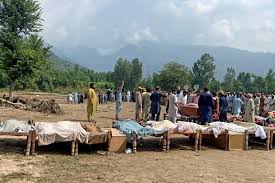As the global housing crisis worsens — with more than 1.8 billion people lacking adequate, affordable homes — many countries are struggling to find lasting solutions. But one small nation has quietly built a model that works: Uruguay.
In Uruguay, housing cooperatives offer a third way between public and private housing. Residents either contribute money (in “savings cooperatives”) or labor (in “mutual aid cooperatives”) to build their own homes, which are collectively owned and kept permanently off the private market. This means they stay affordable and accessible, generation after generation.
Uruguay’s housing cooperatives began in the 1960s, during economic turmoil. Supported by government funding, loans from development banks, and residents’ own efforts, these cooperatives quickly proved to be faster, cheaper, and higher-quality than conventional housing projects.
In 1968, the country passed its National Housing Law, giving legal backing to cooperatives and outlining how the government would support them — through land access, financial aid, and oversight.
Since then, over 2,000 housing cooperatives have been created, serving about 5% of the country’s households. They vary in size — some have just 12 units, while others serve hundreds of families.
Two Main Paths to Homeownership, including, Savings Cooperatives:
Members contribute around 15% of the building costs.
The rest is covered by government-backed loans.
Members pay monthly fees and own “social shares,” which they can pass to their children.
And Mutual Aid Cooperatives:
Designed for people without savings.
Members contribute 21 hours of weekly labor (physical or administrative).
Families earn the right to live in the homes they helped build.
In both models, the housing remains collectively owned, ensuring long-term affordability and protection from speculation.
Uruguay’s success wouldn’t be possible without three key supports:
Government Involvement: The state provides funding, land, and oversight.
Cooperative Federations: FUCVAM (mutual aid) and FECOVI (savings) offer legal help, training, and advocacy.
Technical Assistance Institutes: Nonprofits that guide inexperienced residents through the complex process of construction and cooperative management.
Early cooperatives were built on the outskirts of cities, inspired by a preference for low-density, green-space living. But this led to urban sprawl, making access to jobs and schools more difficult.
Later, cooperatives began reclaiming abandoned buildings in Montevideo’s historic center, adapting old structures into affordable homes without pushing out low-income residents.
One standout example is MUJEFA (Women Heads of Household), founded in 1995 by single mothers. These women took an abandoned building and turned it into safe, functional housing. They didn’t just build homes — they built independence, dignity, and a support network for themselves and their children.
More recently, Uruguay built its first high-rise cooperative, COVIVEMA 5, in 2015. With 55 apartments and 300 residents, the project required specialized training so that everyday people could help build it safely. The residents also designed a public square — Plaza Luisa Cuesta — that brought new life to their dense urban neighborhood.
Uruguay shows the world that housing cooperatives are not just an emergency fix — they are a sustainable, dignified, people-powered solution. They give residents control, security, and community. And most importantly, they prove that even those without wealth can build a lasting place to call home, with the right support.
As countries around the world search for answers to the housing crisis, Uruguay offers a powerful example of what’s possible when housing is treated not as a commodity — but as a human right.



